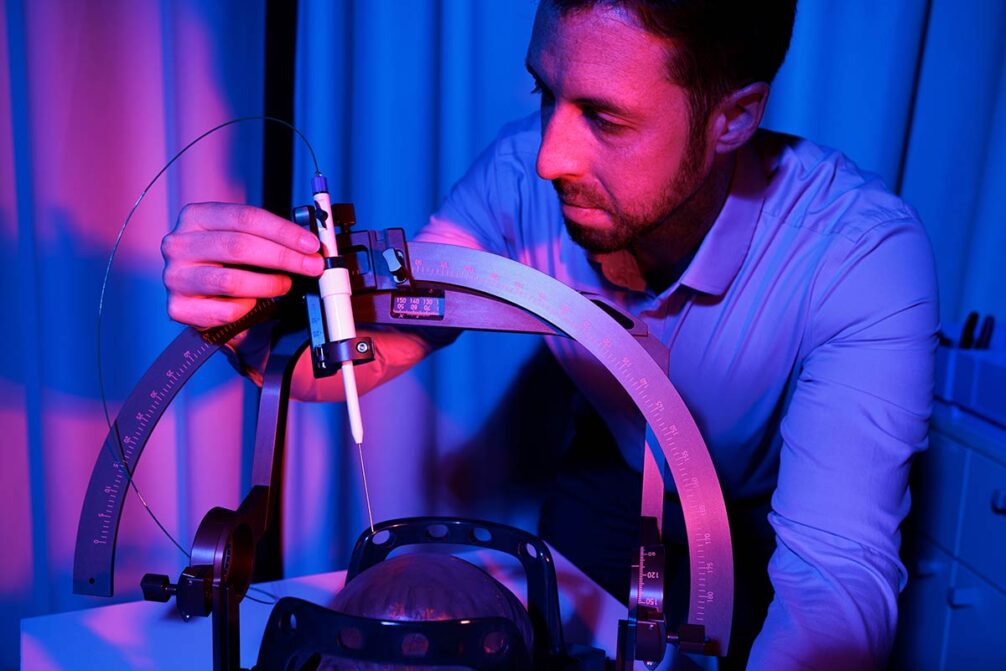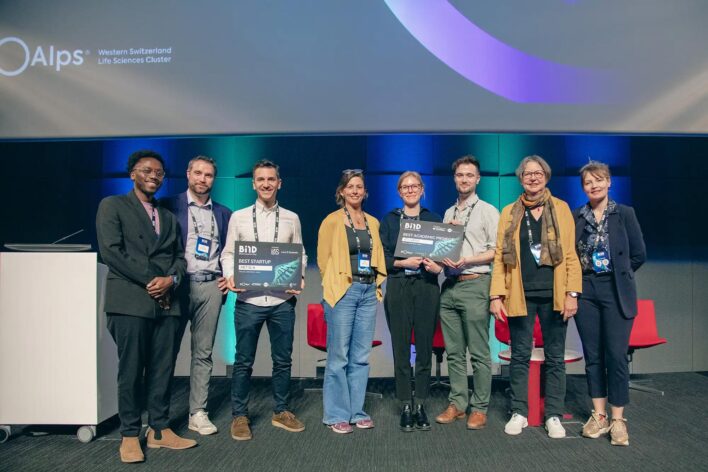News
Clee Medical: AI and imaging at the service of a new era in brain surgery

Less than a year after its incorporation, Clee Medical SA is already establishing itself as one of Switzerland’s most promising medtech startups. Specializing in ultra-high-resolution intraoperative imaging combined with AI-powered navigation, the company was recently selected to join the prestigious Venture Leaders Medtech 2025 program. The international roadshow, held in Boston, will provide the team with a unique opportunity to strengthen its clinical and commercial ambitions on the global stage.
We spoke with Matthew Lapinski, Co-founder and CEO, about the origins of the project, the transformative potential of the technology, and the milestones that lie ahead.
Clee Medical was recently selected for the Venture Leaders Medtech 2025 program. What does this recognition mean to you and your team, and what do you hope to gain from the upcoming experience in Boston?
Being selected for the Venture Leaders Medtech 2025 program is a tremendous honor and a powerful validation of what we’re building at Clee Medical. We’re especially proud to be recognized despite being less than a year old, which speaks volumes about both the urgency of the clinical need we’re addressing and the potential global impact of our technology in neurosurgery.
Personally, I’m excited to return to Boston, a place I called home for over 15 years before moving to Geneva. This trip offers an incredible opportunity to reconnect with the vibrant medtech and research community in Massachusetts. I’m looking forward to engaging with top-tier investors, deepening partnerships with clinicians and Boston area companies, and taking a meaningful step forward on our path to commercialization and FDA approval.
Clee Medical emerged from a research project hosted at the Wyss Center. How did this entrepreneurial journey begin and what role did the ecosystem play in the creation of the company?
Clee Medical spun out of the Wyss Center after several years of developing a solution to track the real-time position of surgical tools based on the live, shifting state of the brain. We realized that to make a truly meaningful impact, we needed to move fast, and that meant spinning out and accelerating toward commercialization.
The ecosystem within the Wyss Center, and Campus Biotech more broadly, has been incredibly supportive. It gave me access to a community of like-minded entrepreneurs and world-class facilities from day one. That combination of infrastructure and peer support was essential. We officially incorporated about 10 months ago, and there’s no doubt in my mind that we wouldn’t be nearly as far along if we had started anywhere else.
Your technology combines ultra-high-resolution intraoperative imaging with AI-assisted navigation. How does this represent a breakthrough for minimally invasive brain surgery?
At its core, our technology addresses one of the biggest challenges in minimally invasive brain surgery: knowing exactly where you are inside the brain, in real time. Today’s navigation tools rely heavily on pre-operative images, which can quickly become outdated once the brain shifts during surgery. That’s especially problematic when you’re targeting areas of the brain and being even a millimeter off track could have significant and long-term effects.
We’ve developed an ultra-high-resolution imaging system that works directly inside the brain during surgery, allowing surgeons to see the live anatomy as it actually is, not just as it was in the MRI the night before. On top of that, we use AI-assisted navigation to interpret that live imaging in real time, highlighting key structures and helping avoid critical areas like blood vessels or functional tissue.
This combination represents a paradigm shift. It turns deep brain access from something that’s high-risk and heavily reliant on pre-op planning into a process that’s adaptive, visual, and patient specific.
You speak of a new era of highly targeted neurotherapies. What is your long-term ambition for Clee Medical, and what challenges do you still need to overcome to make it a reality?
Our long-term ambition at Clee Medical is to help usher in a new era of highly targeted neurotherapies where clinicians can safely and precisely access any circuit in the brain deliver the right therapy, at the right place, at the right time. That could mean electrical stimulation, drug delivery, gene therapy, or future modalities we haven’t yet imagined, but all of it depends on one foundational capability: confident access to any location.
To get there, we need to overcome several challenges. Technically, we’re pushing the limits of real-time imaging resolution, AI interpretation, and seamless integration into the surgical workflow. Clinically, we need to continue generating data to prove that what we offer not only works, but works in real time and delivers patient specific anatomical data and therapeutic prediction. And from a business standpoint, we need to scale a team and operation capable of navigating complex regulatory environments like the FDA and CE mark pathways.
But we’re optimistic. We’re building not just a product, but a platform that could serve as the backbone for next-generation neurosurgical procedures.
What are the key milestones ahead for Clee Medical in 2025?
We have big plans to continue our momentum. Before the end of the year we will:
- Exhibit at the European Society for Stereotactic and Functional Neurosurgery (ESSFN)—the largest gathering of our potential clinical partners in Europe,
- Release a potentially market-ready system design, and
- Close our first fundraising round to fuel the next phase of growth.
Although we already have accomplished a lot in 2025, 2026 will be an even bigger year for us are we sprint towards gaining commercial approval and helping the lives of our patients.
